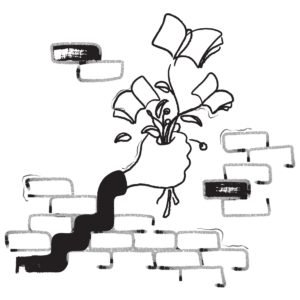We hope you enjoy learning about this principle!
Find out more in our main article: This is how sustainably websites can grow.
“The yield of a system is theoretically unlimited – or only limited by the information and imagination of the designer.”
Bill Mollison
Obtaining a yield: While traditional permaculture is about harvesting crops, such as vegetables, websites are about yields of a different kind. If the relationship between systems is symbiotic, they will generally produce sustainable yields.
Yields on a website
- Define and prioritise your conversion goals. Identify concrete and measurable goals for your website and use them to structure and design the site.
- Generate passive income: A web project that generates a lot of passive income without requiring a great deal of effort is the perfect equivalent to an efficient permaculture garden. However, in both cases you will need to put in some work ;). You should also appreciate indirect yields, such as recognition, positive feedback or new contacts and knowledge.
- Use stacking functions to combine multiple functions.
Stacking functions
Stacking functions combine multiple functions in a single solution. Ideally, every element on your website should have several functions; so while blog posts inform your readers, they can also help you to optimize your website for search engines. And of course, when you write about a particular topic, you always learn something new.
Incidentally, the concept of stacking functions also works well offline: why not hold your next web project meeting while you’re taking a walk? You’ll get some fresh air and exercise at the same time.
- Grow sustainably: If something is working well, think about whether you want to focus on it more and how you could do this. Take things one step at a time and think about using automation to improve profitability.
- Follow the fair share principle and divide profits fairly. Permaculture web design isn’t about unlimited consumption and growth. Aside from responsible marketing, this could also mean sharing a percentage of the project revenue with the team or donating profits to a good cause.
Now you know one of the 12 principles.
Want to find out more? Go to the next principle or return to the main article!

